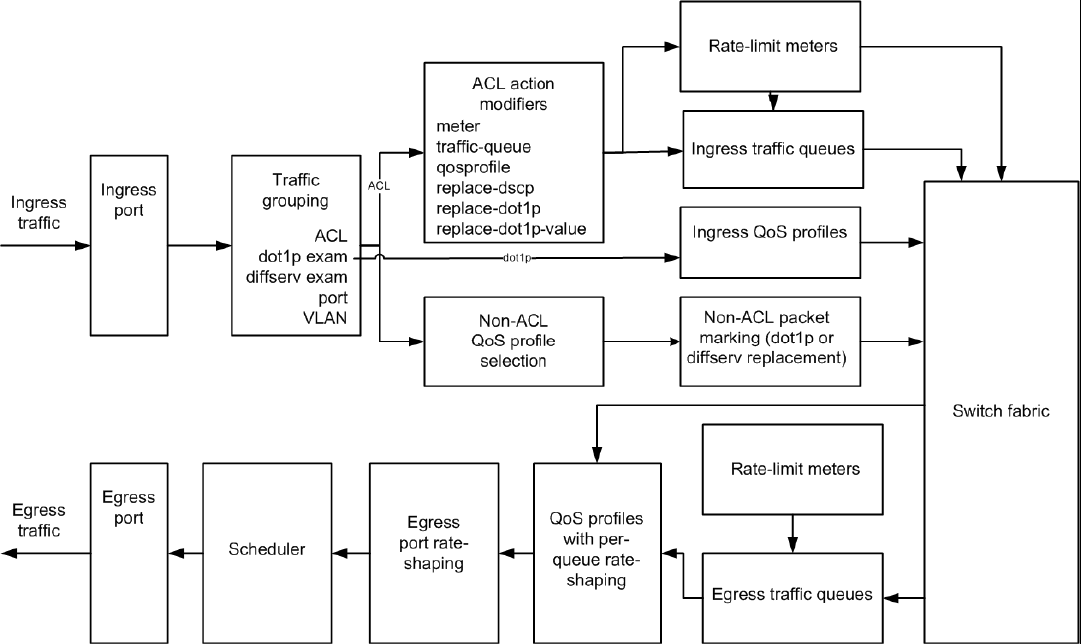This chapter discusses the Quality of Service (QoS) feature, and allows you to configure a switch to provide different levels of service to different groups of traffic. In this section you will find both overview information, as well as specific information on how to configure and monitor the QoS feature.
Quality of Service (QoS) is a feature that allows you to configure a switch to provide different levels of service to different groups of traffic. For example, QoS allows you to do the following:
QoS on Extreme Networks Switches shows the QoS components that provide these features on Extreme Networks switches.

Data enters the ingress port and is sorted into traffic groups, which can be classified as either ACL-based or non-ACL-based.
The ACL-based traffic groups provide the most control of QoS features and can be used to apply ingress and egress rate limiting and rate shaping as follows:
Non-ACL-based traffic groups specify an ingress or egress QoS profile for rate limiting and rate shaping. These groups cannot use ingress or egress software traffic queues. However, non-ACL-based traffic groups can use the packet marking feature to change the dot1p or DiffServ values in egress frames or packets.
The ingress rate-limiting and rate-shaping features allow you to apply QoS to incoming traffic before it reaches the switch fabric. If some out-of-profile traffic needs to be dropped, it is better to drop it before it consumes resources in the switch fabric.
All ingress traffic is linked to an egress traffic queue or QoS profile before it reaches the switch fabric. This information is forwarded with the traffic to the egress interface, where it selects the appropriate egress traffic queue or QoS profile. Egress traffic from all traffic queues and QoS profiles is forwarded to the egress port rate-shaping feature, which applies QoS to the entire port. When multiple QoS profiles are contending for egress bandwidth, the scheduler determines which queues are serviced.
The following sections provide more information on QoS:

 Print
this page
Print
this page Email this topic
Email this topic Feedback
Feedback